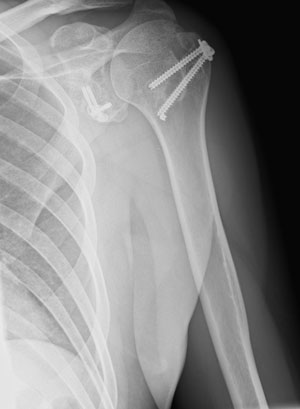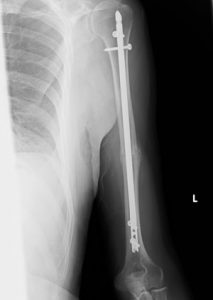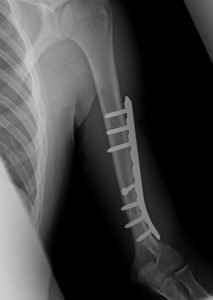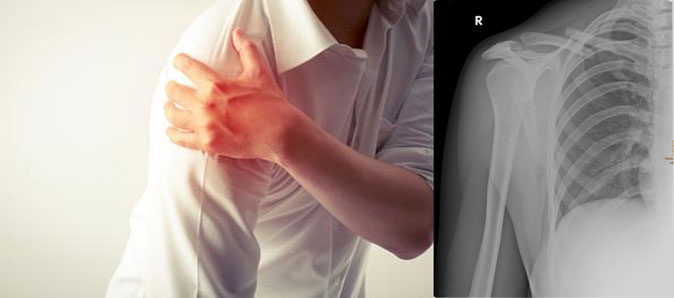Shoulder Fracture
Shoulder Fracture – Causes
A shoulder fracture usually occurs at the anterior rim of the glenoid due to dislocations of the humeral head. This is then referred to as a shoulder dislocation.
Common causes:
- excessive stress acting on the shoulder
- direct impact in an accident or fall
- when breaking a fall with the arm
- In cases of osteoporosis, a shoulder fracture is more likely if a fall occurs.
Shoulder Fracture – Treatment

The fractured fragment is brought into the correct position and fixed with two screws using arthroscopy (minimally invasive arthroscopic technique). If the shoulder fracture heals in a malposition, bone reconstruction must be performed to prevent pseudoarthrosis. It is then necessary to fix a bone block to the glenoid to reconstruct the defect. Several techniques are commonly used for this. The Latarjet procedure uses a bone near the shoulder, and the iliac crest graft is inserted as a free bone graft.
In my practice in Vienna, I would be happy to inform you about the various surgical methods.
What is a glenoid fracture?
This type of shoulder fracture involves the fracture of the glenoid. A glenoid fracture should be surgically treated if shoulder stability is compromised. This can best be visualized using computed tomography (CT).
Do I need physiotherapy after shoulder fracture surgery?
It is of great importance that you begin with physiotherapeutic exercises and shoulder mobilization as soon as possible after the operation.
Upper Arm Fracture
In an upper arm fracture, a distinction is made between a humeral head fracture and a humeral shaft fracture.
Humeral Head Fracture
What is a humeral head fracture?
The humeral head fracture is a fracture which, if it heals incorrectly, significantly impairs shoulder mobility. It accounts for about 5% of all fractures.
How is a humeral head fracture treated?
Depending on the extent of displacement and individual demands on the shoulder joint, surgical stabilization is necessary. Fractures in the humeral head area are treated with a titanium plate, which can often be inserted minimally invasively. Fractures involving the joint are reduced and stabilized with arthroscopic assistance.
.
Do I need physiotherapy after the operation?
Postoperatively, physiotherapeutic exercises and shoulder mobilization are started immediately.
If a humeral head fracture is treated only with an immobilization bandage, it must be worn for 3 weeks.
Humeral Shaft Fracture
What is a humeral shaft fracture?
A humeral shaft fracture is an upper arm fracture without involvement of the shoulder joint and the elbow region.
How is a humeral shaft fracture treated?
Humeral shaft fractures have now become a domain of surgical therapy, as conservative therapy with immobilizing bandages takes 6-8 weeks and severely affects the mobility of the shoulder and elbow joints.
Essentially, there are 2 common surgical methods:
- The interlocking nail, which is inserted into the humerus and fixed with transverse bolts.
- The locking plate, which is placed on the bone and screwed.

Interlocking nail

Locking Plate
Do I need physiotherapy after the operation?
Through appropriate physiotherapy, the upper arm can be mobilized immediately with both implants.

I would be happy to advise you in my practice!
CONTACT
